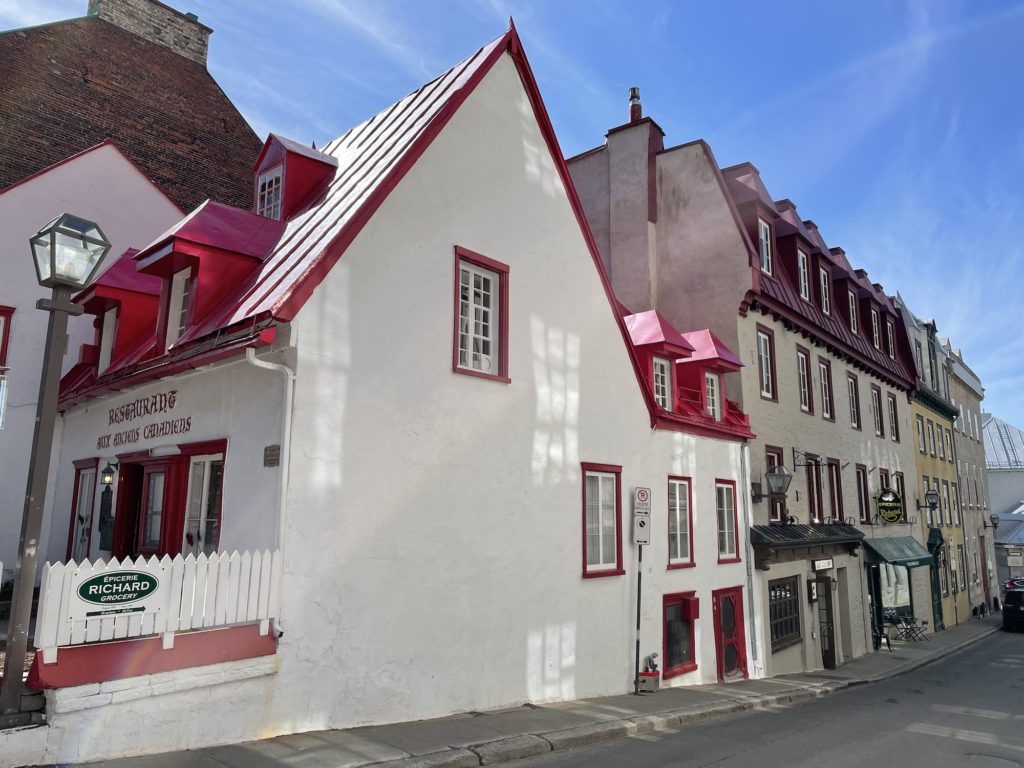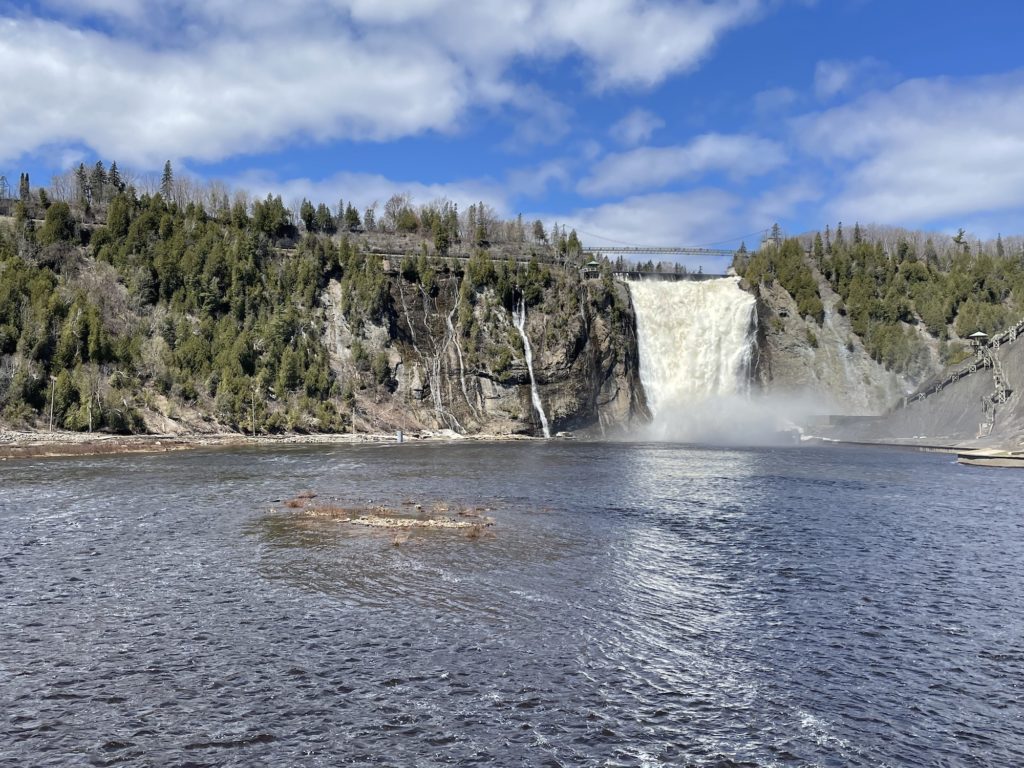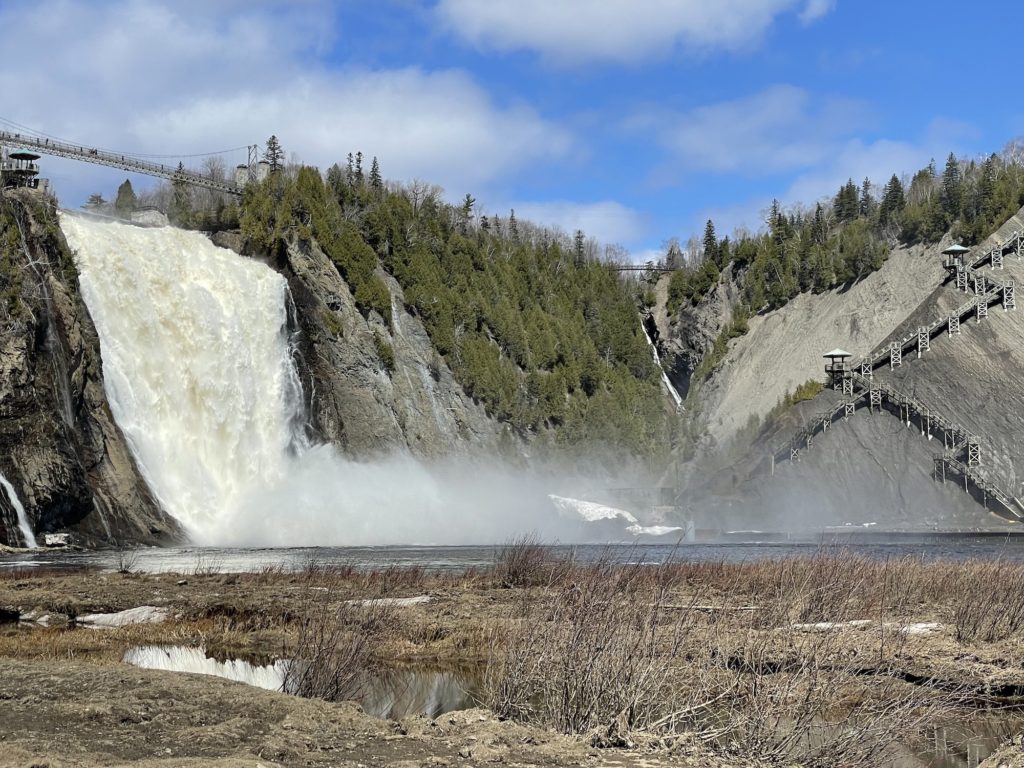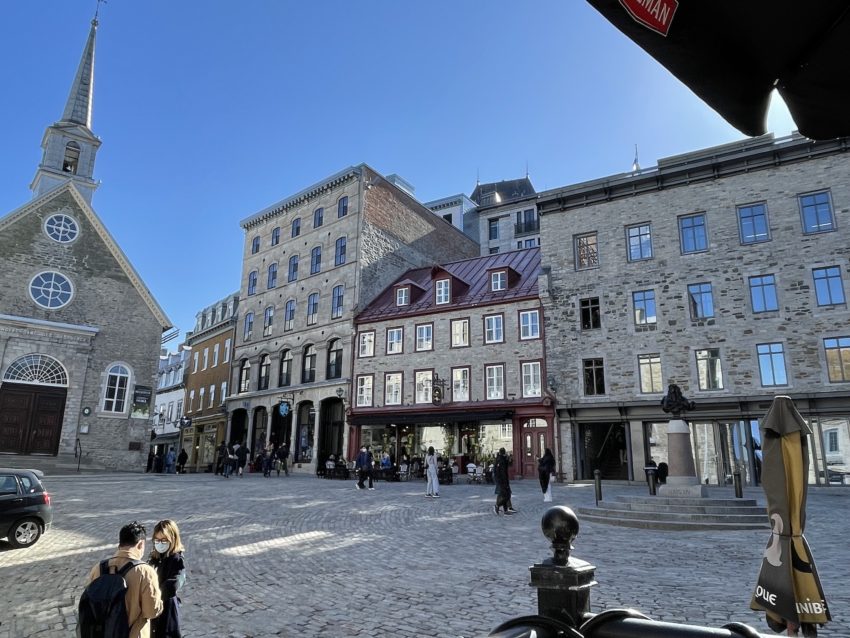If Montreal is the brazen youth of the French-Canadian province of Quebec, the capital Quebec City is the maiden aunt. Staid, proper and well turned out, it’s also packed with history and great architecture. At times it’s got the look and feel of an ancient French village.
But this is also where the indigenous people of Canada succumbed to European control and the French dream of defeating the British for control of the young nation was ended. Unlike some north American cities, many historic buildings remain and the ramparts that surround the old town, the Vieux-Québec, are the only fortified city walls left in the US and Canada. No wonder it’s a UNESCO World Heritage Site.

We arrived on the ViaRail train from Montreal, a pleasant enough 3.5-hours that had us crossing the vast and rather tedious agricultural plains and managed woodlands of the province without incident. We stopped at a few towns and villages en route, crossed the mighty St Lawrence River and its churning tributaries and arrived in a sunny Quebec City ready to park ourselves at Hotel Le Priori deep in the old town, below the fortifications and close to the river.

The old town is a visual feast of centuries-old buildings, many of which are now given over to galleries, antiques shops, restaurants and touristy boutiques, the heart of which is the cobbled Place Royale, a square that looks as if it’s stepped out of a French fairytale. It’s a great place to stop for a beer, to people watch and take photos. Alleyways and steps lead to friendly bars and shops and other parts of town, as well as the funicular that carries the weary up the steep hill to the Dufferin Terrace. A popular street is the Rue du Petit Champlain, a true tourist magnet but with some interesting shops and excellent restaurants including Le Lapin Saute, which not surprisingly given its name serves up some fine rabbit dishes.

The Dufferin Terrace, a long wooden promenade with grand views of the river, is overlooked by the mighty Chateau Frontenac, which looks as if it should be a king’s palace rather than a hotel. It is the city’s trademark building, looming over everything and a true giant, so it’s disappointing that guided tours are no longer possible. But it’s not the only example of great architecture in Quebec. There’s the art deco of the Price Building close to the town hall, while next door is the venerable Hotel Clarendon with a brick art deco facade. Of the modern structures, the Hotel Le Concorde from 1970 is the most memorable in a love-it-or-hate it way and is topped with a revolving restaurant. In truth, a walk down most of the city’s streets throws up a gem or two. Few are ordinary.

The Promenade des Gouverneurs leads off the Dufferin Terrace. A series of paths and punishing flights of steps, it leads to the mighty citadelle and the centrepiece of the city’s fortifications. Rebuilt by the British in the 19th century, it famously looked south towards potential American invaders while keeping a close eye on the potentially rebellious French-supporting citizens in the city itself. The adjoining parkland, the Plains of Abraham, is the sight of one of the most momentous events in Canadian history when, in 1759 during the Seven Years’ War, General Wolfe led the British forces into battle and rapidly defeated the French. Both Wolfe and the French commander died but by the following year the British had taken control of Canada. The story of the battle is told in the Plains of Abraham Museum but it’s a disappointing affair, its focus too heavily on child visitors.

The Museum of Civilisation is far more successful, host to a number of exhibitions including a bizarre if fascinating probe into shit – a mix of social history, interaction, models of turds (!) and suggestions of possible uses for our waste. There was also a temporary and sometimes moving exhibition about Pompeii and the eruption of Vesuvius in AD79. However, the heart of the museum is given over to the city and its history, its indigenous people and the waves of immigrants who today make up its population. It’s one of the best museums I’ve visited in a long time.
We took a walk along and around the Rue St-Jean, a lively street with bars, restaurants and trendy shops, interesting architecture and quiet side streets. One evening we stopped for a decent meal at Nina Pizza Napolitaine and then went to one of the few lively spots we found in the city for a night out, Le Drague Cabaret Bar. It’s a palatial place with numerous rooms, bars and dancefloors, and was rammed with people of all persuasions. The drag show itself was entertaining enough but it’s not easy to follow a show in French when one’s French is so poor! We watched it regardless and then left for home, these days being incapable of late nights.

One day we took the bus out of the city on Route 138, through the suburbs to the Montmorency Falls. With a drop of 82m, the waterfall plunges further than Niagara but has very little of the tourist tat associated with its more famous rival. Not being as wide, however, it’s possible to cross the falls on a narrow pedestrian bridge before taking a gondola lift from top to bottom to get a different perspective. I’m not sure why, but there’s something utterly gripping about a waterfall, the thundering of the water as it tumbles violently to the river below. We stood mesmerised watching the waters of the Montmorency River passing below us and disappearing over the cliff in front of us. Perhaps fortunately for my legs, the long staircase back to the top on the opposite bank was closed so after a little walk around we returned to the modest park at the top. This, incidentally, was the site of an attempted British attack on French forces at the top of the cliff by Wolfe’s men back at the time of the Plains of Abraham assault. Unsurprisingly, it failed.

We took the bus back through the suburbs, passing many attractive residential districts and yet more historic buildings, both civic and residential. And that is what makes Quebec City such a special place. It has not trashed its past in the name of progress but neither does it feel like a city that’s stuck in the glory days of old. It’s a city with a modern vigour as well as a healthy respect for its past. And that’s probably why I loved it so much.

